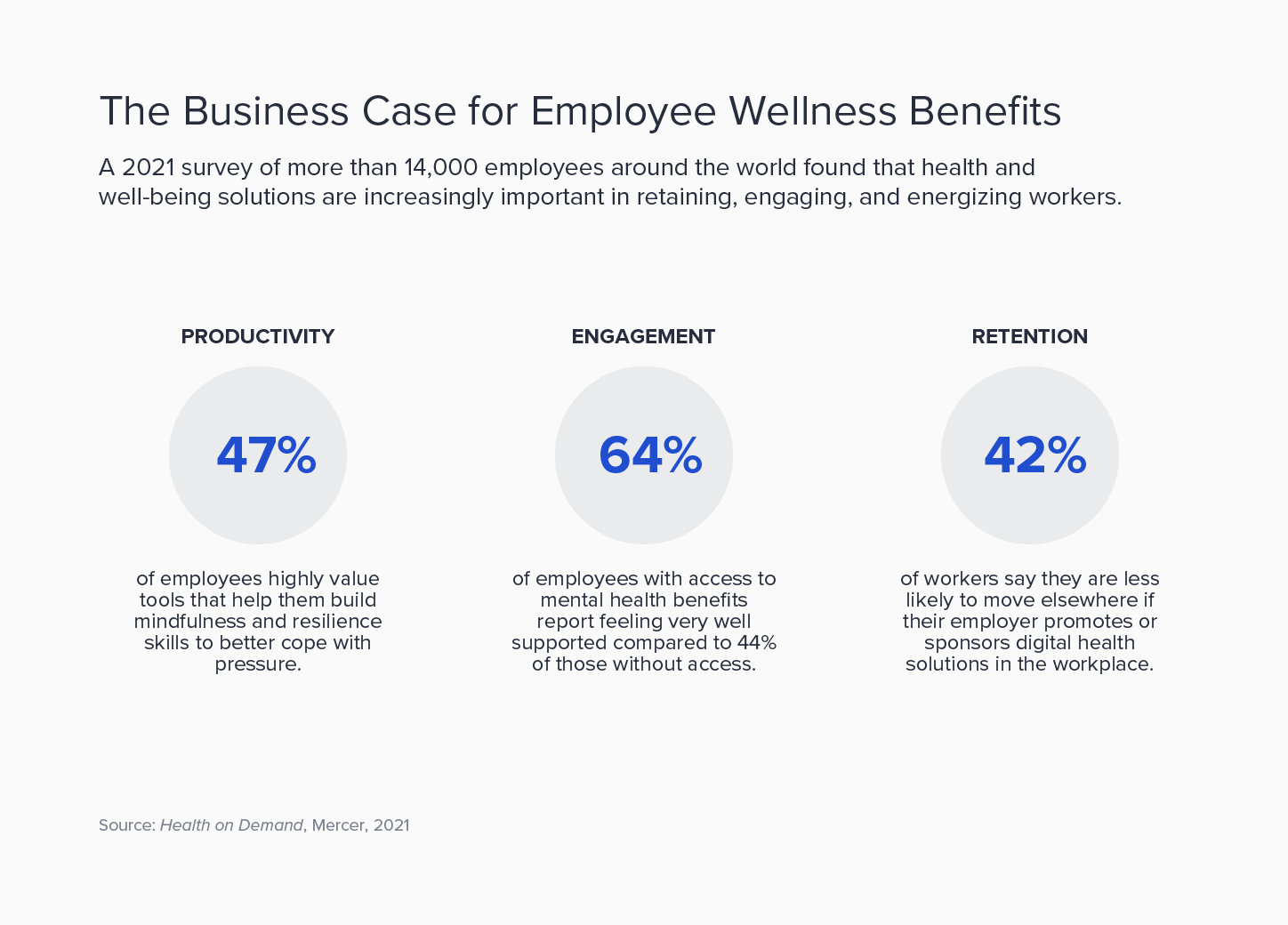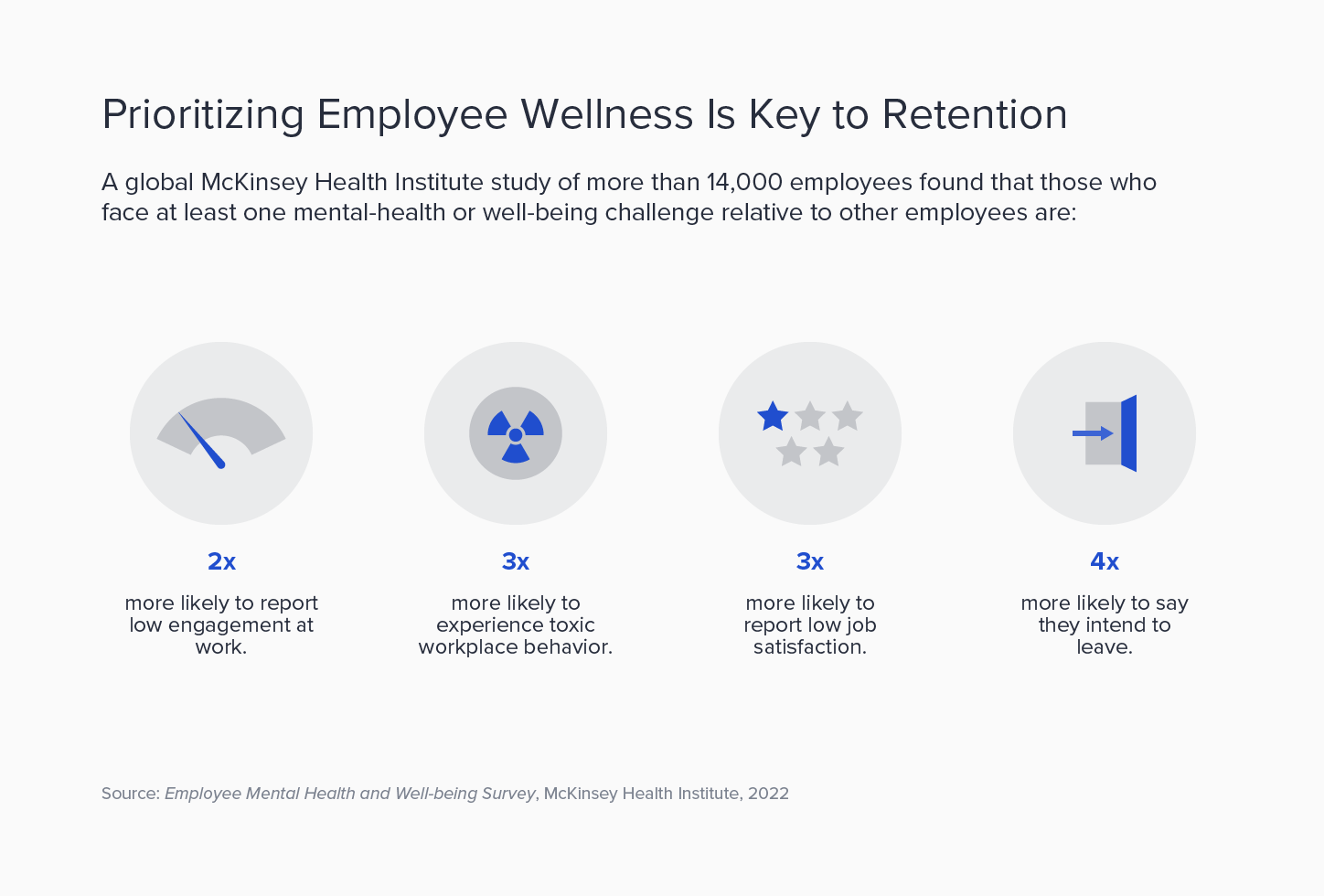New Life for EAPs: How Digital Employee Wellness Benefits Are Meeting the Moment
authors are vetted experts in their fields and write on topics in which they are extremely knowledgeable. All of our content is peer reviewed and validated by world-class professionals.

Featured Experts
Healthcare is confusing, child and elder care are hard to find, and balancing the demands of parenting and work is increasingly complex. In an era when burnout is at an all-time high, companies know it’s imperative to help their employees manage their workloads—both on the job and at home.
Addressing these challenges takes time and energy that many employees don’t have, and it’s pushing them out of the workforce. Among people who left their jobs in the last year, more than half cited family and personal obligations as a reason, according to a 2022 survey of 2,200 Americans by Morning Consult.
Enter digital health and well-being services such as Cleo, Wellthy, and Maven. These emerging platforms promise to help employees navigate domestic challenges with a level of personal service and expertise that traditional employee assistance programs (EAPs) can’t match.
“Employees’ needs and values have shifted over the past couple of years. Today, competitive benefits and compensation are table stakes when it comes to attracting and engaging top talent,” Gail Beauregard, Vice President of Global Total Rewards at Boston Scientific, tells Staffing.com. In 2020, the Fortune 500 manufacturing giant started offering Maven to deliver more comprehensive and personalized on-demand support services. “We are moving from simply responding to employee wellness needs to addressing a broad spectrum of unique needs.”
Anticipating employees’ needs at work and home sets them up for success, Beauregard says. Boston Scientific employees who were asked what they value most about Maven listed time savings, less angst and worry, and a smoother return to work. “People don’t want to have to dig for what they need—they want it in front of them when they need it most.”
The idea has caught on with other large organizations. In 2019 and 2020, Pinterest, Salesforce, and PepsiCo started offering parental benefits to employees through Cleo, a plan that matches caregivers with trained guides, such as midwives, parent coaches, and social workers. This year, Hilton added Wellthy—a service that connects employees with care professionals such as nurses and psychologists, and also coordinates help for legal and financial issues—to its employee wellness benefits. (Best Buy, Cisco, and Meta also use Wellthy.)
Fortune 500 global consulting firm Booz Allen Hamilton also began offering Maven recently, with the goal of meeting its employees’ needs throughout all phases and stages of their life and work, from early career to retirement, Christy Beltran, International Benefits Manager at Booz Allen Hamilton, tells Staffing.com. “‘Choose your own adventure’ is important in this day and age, and I think these types of niche programs help employers fulfill some of that need.”

How Digital Health and Wellness Plans Are Disrupting Employee Benefit Options
For decades, companies have relied on EAPs to help workers with personal problems that affect their job performance; nearly every company with more than 5,000 employees offers one. By providing a range of support from confidential counseling and referrals to legal consultations and financial guidance, EAPs have been found to reduce absenteeism and presenteeism, while improving productivity, engagement, and retention.
Maria Mauceri, Vice President and Actuary in Human Resources at New York Life Insurance Company, tells Staffing.com that it’s “actually difficult to overstate the benefits,” of the company’s traditional EAP, which is provided through LifeCare. “In 2021, employees self-reported saving an average of 14 hours’ productivity per request using LifeCare’s services,” she says. “That’s nearly two work days of productivity saved. For the same year, 93% of respondents reported increased productivity, 94% reported reduced stress, and 58% reported increased loyalty to the company after using LifeCare’s services.”
But EAPs are drastically underused by employees, Jeff Oldham, co-founder of Informed Consulting, a benefits consulting firm for early- and mid-stage digital health companies, tells Staffing.com.
“EAPs provide a wide range of services, to five generations of employees in a number of different industries, without offering deep personalization; in doing so, one of the consequences is EAPs struggle with utilization,” says Oldham. “Typically, only 5.5% of an employer’s population uses an EAP, because [the benefits] are poorly communicated at work; employees are often unaware that an EAP exists, and even with awareness, some employees are concerned with confidentiality.”
Another drawback of traditional EAPs is that while they connect employees with counseling services, they don’t cover physical healthcare; and the majority of employee benefits needs involve healthcare.
The New Employee Wellness Plans
Maven, Cleo, Wellthy, and similar benefits platforms differ from traditional EAPs in a few key ways.
One-on-one Help
All of the plans provide members with one-on-one support from a “guide,” “advocate,” or “coordinator.” These advocates operate like personal concierges for family services, says Beauregard. They may advise employees on the company’s leave options, help employees secure referrals for specialized care for themselves or family members, and support employees during and after difficult life events.
Often, a team of credentialed experts support these advocates. “Our care coordinators are the relationship managers and social workers who support our members through their journey. And behind them, we have care advisors, who are experts who know everything there is to know about housing, in-home care, Medicare Advantage, or child care, for example,” Betsy Bland, Chief Operating Officer at Wellthy, tells Staffing.com.
Extended Services for New Parents
Although some of the fastest-growing health and well-being plans offer both virtual and brick-and-mortar access to physicians and other licensed experts, the selling point goes beyond telemedicine services like nurse hotlines and on-demand video appointments to more comprehensive support for new parents.
“Traditional maternity support programs typically end at birth, leaving new parents on their own to navigate the complexities of finding the care and support they need,” Beauregard says. “[Boston Scientific] started offering Maven to deliver more comprehensive and personalized on-demand support services,” such as referrals for postpartum depression and access to local career coaches for support with the return to work.
Booz Allen Hamilton’s employees have also benefited from Maven’s new-parent services. “We find that 21% of our Maven members manage their stress and anxiety a little bit better throughout the process of becoming a new parent, and about 90% of them return to work,” says Beltran.
Health Condition Management
Maven is one of a growing number of platforms that help employees manage specific health conditions and concerns at home, such as women's health and fertility (Progyny), musculoskeletal health (Hinge Health and Sword), chronic conditions (Lark Health and Omada Health), behavioral health (Spring Health and Headspace Health), and men’s health and fertility (Bastion Health).
"Many of these personalized, specialist digital health companies are compensated based on employee utilization. Therefore, communication, outreach and engagement is very personalized,” Oldham says. “While these specialty health services are more expensive than EAPs, their utilization is much higher” than EAPs within companies that have them.
Research has found that digital wellness platforms are able to engage about 50% of employees, depending on the incentives an employer provides and whether the platform creates a personalized experience.
Tailoring the Right Mix of Plans for Your Workforce
With record high burnout and turnover, and job stress accounting for an estimated $300 billion in losses annually for employers, it’s clear that many companies’ current employee benefit plans are not meeting the moment.
“The call to action for employers is to determine who is most adversely impacted,” says Cleo CEO Sarahjane Sacchetti. “Next, do you have solutions that specifically address not just the symptoms of burnout, but the problem that's driving that resilience gap? Because the problems that are driving that gap are usually structural. How do I find child care? How do I navigate my return to work after having a baby? How do I get more sleep at night? How do I find hospice for my aging parents?”

Figuring out your employees’ pain points can help determine which service might be best for your workforce. You may deduce that you already offer an exhaustive suite of EAP benefits that simply need better management. Or you may elect to add a member advocate—a single point of contact who helps employees navigate the company’s plan. In McKinsey & Company’s 2021 Employer Health Benefits Survey, 41% of 1,640 US employer-benefits decision makers said they already do or definitely will offer member advocacy solutions. In some instances it may be advantageous to use a mix: EAP providers for some services and customized digital plans for others.
While it’s tempting to think that more is always more, Beltran stresses that the number of health services your company offers should be digestible so that employees don’t feel overwhelmed by choices. “Make sure you're tailoring [your niche programs] to what's going on at your organization, what you're seeing in your claims data and in your employee feedback, that it aligns with your diversity and inclusion goals, and that it's the right size for your organization,” she adds.
Although no EAP or digital health and wellness program is a panacea, finding the right mix can help alleviate many burdens, invigorate your workforce, and ultimately help your company attract and retain top talent in challenging times.


